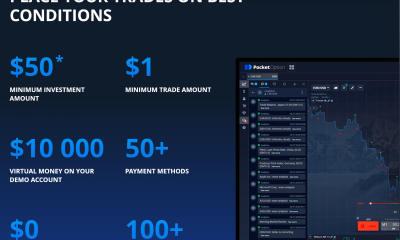Forex
What is liquidity aggregation and how does it make the market cleaner?

One of the important processes in the forex market is liquidity aggregation. Let’s review what it is, its key tasks and discuss market manipulation when no aggregation options are available.
What is liquidity aggregation in brief
Liquidity aggregation is a process that enables forex brokers to access liquidity from multiple sources, including banks, market makers, and other liquidity providers, and consolidate it into a single pool. This allows brokers to offer their clients better pricing, tighter spreads, and faster execution speeds. The better liquidity aggregation the broker has, the more profitable his business is.
Liquidity aggregation typically involves using a technology platform that can connect to multiple liquidity providers and consolidate their prices into a single feed. This feed is then used to execute client trades, with the broker selecting the best available price at any given moment. The platform may also include risk management tools to help brokers manage their exposure and ensure they have sufficient funds to cover client trades.
Key tasks of liquidity aggregation
- Consolidating liquidity. The primary task of liquidity aggregation is to consolidate liquidity from multiple sources such as banks, ECNs (Electronic Communication Networks), and other liquidity providers into a single pool. This allows traders to access a large number of liquidity providers through a single platform.
- Better pricing. By accessing multiple liquidity providers, brokers can offer their clients more competitive pricing, with tighter spreads and lower commissions.
- Faster execution. Liquidity aggregation allows forex brokers to access faster execution speeds, reducing the likelihood of slippage and ensuring client orders are filled at the best available price.
- Increased liquidity. Liquidity aggregation allows forex brokers to access deeper liquidity pools, reducing the risk of order rejection and ensuring that clients can execute trades even in volatile market conditions.
- Improved risk management. By consolidating liquidity from multiple sources, brokerages can manage their exposure more effectively, reducing the risk of significant losses.
- Reporting and analysis. Liquidity aggregation platforms provide detailed reporting and analysis tools to help traders monitor their performance, track their trades, and identify opportunities for improvement.
Overall, liquidity aggregation is an important tool for forex brokers, enabling them to offer their clients better pricing and faster execution speeds, while also reducing their own exposure to risk.
How liquidity aggregation counters market manipulation?
Market manipulation refers to the practice of intentionally influencing the price of a financial instrument, typically by large traders or institutions, for their own gain. Examples of market manipulation include spoofing, where a trader places orders to create the appearance of demand or supply, and front-running, where a trader takes advantage of advance knowledge of a large order to profit from price movements.
Liquidity aggregation can help to counter market manipulation by providing brokers with access to multiple liquidity providers and a diverse range of prices. This makes it more difficult for large traders or institutions to manipulate the market, as their actions will have a smaller impact on the overall market price.
Liquidity aggregation also allows brokers to offer their clients a more transparent trading environment, with prices that reflect the actual market conditions. This can help to reduce the impact of market manipulation and prevent traders from being misled by false prices.
In addition, liquidity aggregation platforms typically include advanced risk management tools, which can help brokers to monitor for potential market manipulation and take steps to mitigate its impact. These tools may include real-time monitoring of order flow and price movements, as well as automated risk controls to prevent large orders from impacting the market.
Overall, liquidity aggregation is an important tool for countering market manipulation in the forex industry, as it allows brokers to access a diverse range of prices and offer their clients a more transparent and fair trading environment. By using liquidity aggregation, brokers can reduce their exposure to market manipulation and provide their clients with a higher level of protection.
Liquidity aggregation can help to make the forex market cleaner by increasing transparency, reducing the likelihood of price manipulation, and improving market efficiency. This can lead to a more trustworthy and reliable trading environment, which can benefit traders, brokers, and other market participants alike.
Solution providers aggregation products offerings
By using liquidity aggregator solutions, forex brokers can provide their clients with a more efficient and transparent trading environment, which can help to build trust and loyalty among their clients.
There are several reputed providers of liquidity aggregation solutions. The oldest and the most advanced products belong to oneZero and PrimeXM. Newer ones include Takeprofit Liquidity Hub and MarksMan from B2Brokers, which offer reliable basics with fewer features.
At the same time, all the solutions are quite different and the brokers should clearly recognize their needs to pick the best match.
The cost of liquidity aggregation can be broken down into two main components: fixed costs and variable costs. Fixed costs include items such as setup fees, monthly fees, and minimum usage fees, which are typically charged regardless of the trading volume. Variable costs, on the other hand, are based on the trading volume and may include fees such as commission per million traded or mark-up on the spread.
Some liquidity aggregator providers may offer customized pricing based on the specific needs and trading volume of the broker. Others may offer tiered pricing, where the cost per million traded decreases as the trading volume increases.
In addition to the direct costs of liquidity aggregation, there may also be indirect costs, such as the cost of implementing and maintaining the necessary technology infrastructure to connect to the liquidity aggregator and ensure smooth operation.
For example, oneZero offers a range of pricing models, including a pay-as-you-go model based on trading volume, as well as customized pricing based on the broker’s specific needs and trading volume.
For the pay-as-you-go model, oneZero charges a commission per million traded, with rates varying depending on the trading volume. For example, for trading volumes up to 100 million, the commission may be 20 USD per million traded, while for trading volumes over 1 billion, the commission may be 5 USD per million traded.
In addition to the commission per million traded, oneZero also charges a minimum usage fee of 1,000 USD per month, as well as setup fees and other fees for certain additional features and services.

 Forex3 years ago
Forex3 years agoForex Today: the dollar is gaining strength amid gloomy sentiment at the start of the Fed’s week

 Forex3 years ago
Forex3 years agoUnbiased review of Pocket Option broker

 Forex3 years ago
Forex3 years agoDollar to pound sterling exchange rate today: Pound plummeted to its lowest since 1985

 Forex3 years ago
Forex3 years agoHow is the Australian dollar doing today?

 Cryptocurrency3 years ago
Cryptocurrency3 years agoWhat happened in the crypto market – current events today

 World3 years ago
World3 years agoWhy are modern video games an art form?

 Commodities3 years ago
Commodities3 years agoCopper continues to fall in price on expectations of lower demand in China

 Economy3 years ago
Economy3 years agoCrude oil tankers double in price due to EU anti-Russian sanctions






















